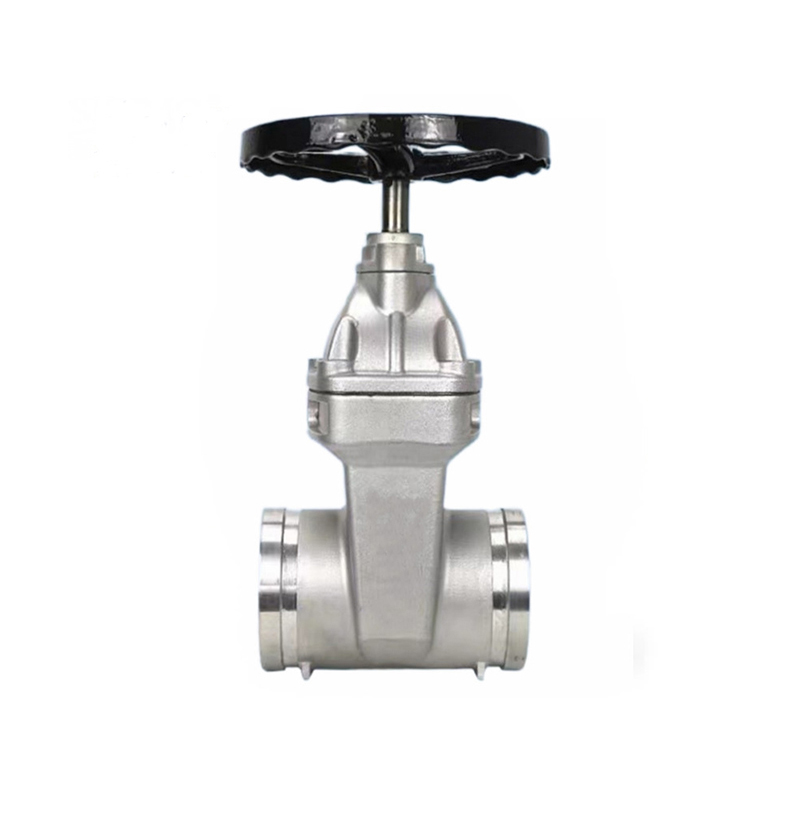I. Definition and Structure
A cast iron gate valve is a type of valve primarily made of cast iron, with a gate plate as its core component. The gate plate moves vertically to fully open or close the pipeline. Based on the sealing surface design, it can be categorized into wedge-type gate valves (single gate, double gate, flexible gate) and parallel gate valves (single gate, double gate).
Key Components:
- Includes door frame, door body, sealing surface, guide rails, and actuating devices (e.g., screw rods, handwheels).
- The door frame and door body are connected via guide rails to ensure vertical movement of the gate plate.
- Sealing surfaces are typically made of rubber or metal materials, achieving tightness through compression.
Actuation Types:
- Rising stem: Exposed valve stem driven by threaded rotation.
- Non-rising stem: Valve stem enclosed within the body, rotated to drive the gate plate.
II. Working Principle
Sealing Mechanisms:
- Self-sealing: Closure relies on medium pressure pressing the gate plate against the seat, suitable for high-pressure environments.
- Forced sealing: External force (e.g., handwheel or actuator) compresses the gate plate and seat, common in medium-low pressure scenarios.
Operation Process:
- Rotate the handwheel or electric actuator to drive the screw rod, lifting or lowering the gate plate.
- Fully open position minimizes fluid resistance; fully closed position ensures a perfect seal.
III. Materials and Types
Material Classifications:
- Gray Cast Iron Gate Valves:
- Low cost, moderate corrosion resistance.
- Ideal for ambient temperature and low-pressure applications (e.g., municipal water supply).
- Ductile Iron Gate Valves:
- High strength and toughness, with rubber-coated sealing surfaces.
- Suitable for chemical and water treatment in medium-pressure environments.
Derived Types:
- Flexible Seated Gate Valves: Compensate for sealing surface misalignment, enhancing leak resistance.
- Non-rising Stem Gate Valves: Integrated valve stem and gate plate design, ideal for space-constrained installations.
IV. Applications
- Hydraulic Engineering:
- Used in sluice gates, pump stations, and large-diameter pipelines to control water flow.
- Petrochemical Industry:
- Transports corrosive media (e.g., acids, alkalis) with ductile iron’s chemical resistance.
- Water Treatment Systems:
- Cuts off or regulates water levels in sewage plants, with flat designs to prevent sediment buildup.
- Energy Sector:
- Controls steam flow in thermal and nuclear power plants under high-temperature and pressure conditions.
V. Advantages and Limitations
Advantages:
- Cost-effective and low maintenance, ideal for budget-limited projects.
- Strong corrosion resistance (especially ductile iron in humid environments).
- Stable sealing performance with flexible seats to minimize leakage.
Limitations:
- Less suitable for extreme high-temperature or high-pressure environments compared to carbon steel valves.
- Higher flow resistance and slower opening/closing speeds.
VI. Maintenance and Precautions
Installation Requirements:
- Install vertically to ensure gate plate alignment with the seat, avoiding jamming.
- Open bypass valves before operation to balance pressure differences.
Routine Maintenance:
- Lubricate valve stem threads monthly to prevent rust.
- Inspect sealing surfaces regularly and replace worn rubber components.
Troubleshooting:
Post time: May-13-2025

